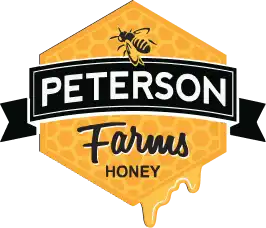What equipment do I need to get started?
Peterson Farms Honey provides a 4 frame nuc. That is the “nucleus” of your new hive. We do not sell the other woodenware that is required for your new hive. You will need a bottomboard, cover, a broodbox and 4 additional frames, and a honey super with frames. Those items can be either 8 or 10 frame. It is best to start out your hobby with one size of equipment and stick with that. The 4 frame nuc from Peterson Farms Honey will sit in the center of your broodbox and the additional 4 frames will go on each side of the nuc along with the included feeder if you decide to use that style.
Where can I purchase the equipment that I need for my new hive?
If you are handy, you can build some of this equipment. It is important to use industry standard dimensions. Otherwise, there are many suppliers that sell the woodenware you will need. These companies include but are not limited to Mann Lake, Dadant or Fleet Farm. Also, don’t forget a veil, gloves, smoker and hive tool.
How do I place my order with Peterson Farms Honey?
Go to our 4 frame nucs page and fill out the form at the bottom of the page. Or email us at petersonfarmshoney@gmail.com. Typical pickup date for TX is the last weekend in April or for MN is the 2nd weekend in May.
I have heard nuc producers use nuc sales to get rid of their junky, old comb.
Our motto is to provide the customer with the best bees, on the best comb, at a fair price. Because we sell so many nucs every year, we are able to have a frame rotation that allows the majority of the nucs to have comb that is typically no more than 3 years old. Quite often the frames are all 1 year old. Our bees in our operation drew out more than 30,000 new frames in 2022 and more than 40,000 in 2023!
What strain of queens do you use?
Our queens have predominantly been grafted off the MN Hygienic line.
How we choose our breeder queens?
We have a year long process to choose our breeder queens. When we pull honey supers in August, we mark the 2 best honey producers in each yard. We take half of those chosen hives and withhold mite treatment. Their only treatment the entire year is apivar placed in March. We grade the hives throughout the fall and winter months and monitor them. The reasoning is to look for colonies that are mite tolerant. In February, we will do a liquid nitrogen test by freezing the brood. We go back 24 hours later and assess the killed brood that was cleaned out. This helps us find our most hygienic colonies. Temperament is also assessed. Choosing these traits is helping move the genetics in a direction where the queens are tolerant to mites but maintain a higher tendency of honey production. Some of the other lines available have mite tolerant tendencies but honey production tends to suffer.
